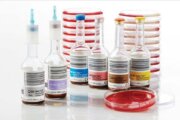I picked up the call from one of our HIV testing staff, who told me that someone had come to the clinic and needed post-exposure prophylaxis, or PEP, for HIV. Think of PEP as the equivalent of “Plan B,” but instead of stopping pregnancies, it stops HIV infection. I called the young man’s name in the lobby, and when we sat down in my office, I asked him what had brought him in for PEP. He looked at me with a puzzled expression. “I just came in today to get tested, and I didn’t know this was even an option.”
[See: Which Practitioner Do I See, and When?]
The “this” he referred to is something that’s sadly still little-known among the general public. Non-occupational post-exposure prophylaxis is typically a 28-day course of HIV medications taken by someone who is HIV-negative after a known exposure with a partner(s) who is HIV-positive or a high-risk encounter with a partner of unknown status. When started within 72 hours of the exposure, it’s over 80 percent effective at reducing the risk of HIV infection, according to the WHO’s fact sheet on PEP. It helps keep the virus from taking root in your body.
The more widely known version of PEP is occupational and is recommended after a work- or environment-related exposure, like a needle stick in a hospital or other exposures to bodily fluids. But the Centers for Disease Control and Prevention also recommends PEP for persons who have had a known exposure to an HIV-positive partner’s blood, genital secretions or other infectious bodily fluids, and on a case-by-case basis when the exposure was high-risk and the HIV status of the partner was unknown.
The patient who recently came in for testing had condomless sex and only learned afterward that his partner was HIV-positive. He knew that the person was on treatment for their HIV, but didn’t know for how long or how consistently they’d been treated. That put him at higher risk for transmission, because he didn’t know if his partner had an undetectable, and therefore untransmittable, viral load. Someone living with HIV who is taking effective antiretroviral medication will eventually achieve an undetectable viral load — the lowest possible number of copies of HIV virus in their system. A recent study of more than 1,000 couples with one partner HIV-positive and the other negative found no cases of HIV transmission among couples where the HIV-positive partner had an undetectable viral load.
[See: 16 Health Screenings All Women Need.]
High-risk exposures include condomless (or if the condom broke/slipped) anal or vaginal sex, sexual assault and the sharing of injection drug needles/equipment. You can evaluate the risk of different acts with this tool from the CDC. Regardless of how the exposure occurred, it’s essential to prioritize medical care as soon as possible to be evaluated for the need for PEP or other sexually transmitted infection treatments. Those treatments should be taken completely to be effective. Unfortunately, figures from the World Health Organization noted that only 57 percent of people who started PEP completed the month (which is crucial to its success), and that only 40 percent of sexual assault victims were given PEP.
My recent patient appened to come to our clinic within the 72-hour window for accessing PEP, despite not having known about it. He met with a doctor that afternoon and left with a month’s worth of PEP medication. But for every patient who accesses PEP when medically needed, there are cases of HIV transmission that could have been prevented if only more people knew about PEP. So if you, a friend or family member finds themselves in a situation like my patient did, please contact your nearest medical facility about PEP.
[See: 10 Lessons From Empowered Patients.]
The best place to seek PEP is the emergency room at your local hospital. Some urgent care centers and walk-in clinics offer PEP, as well; many of these are in urban areas. If you’re in the greater District of Columbia area and in need of PEP, contact Whitman-Walker Health at 202-797-4439, or 1-800-465-9551 outside of normal business hours.
More from U.S. News
9 Ways Your Hair Reflects Your Health
Should You See an Energy Healer?
8 Unexpected Signs You’re Stressed
Post-Exposure Prophylaxis for HIV: What, When and How? originally appeared on usnews.com







